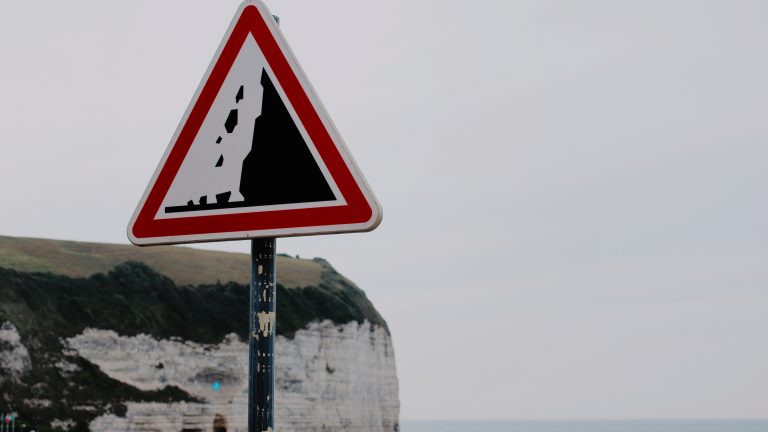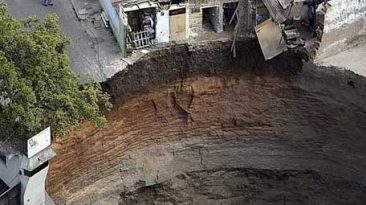Carved by glaciers thousands of years ago, the cliffs of California’s legendary Yosemite National Park constantly change shape. Due to tectonic forces and seasonal weather, these rocks faces are in a constant state of flux.
In 2017, a group of climbers in the park evaded two massive rockfalls in two days. They watched helplessly as their only escape route crumbled beneath their feet. This group survived by reaching the summit, but what if you were climbing alone?
Could you survive a fall? Would you be safer on a trail?
Triggered by vegetation, geologic forces, and temperature changes, most rockfalls occur in the spring or early winter. When water seeps into the cracks of the cliff sides, it can freeze and expand during the winter months, creating pressure within the rocks.
As the ice melts, the rocks can crack and release. This split can affect a large area, sending down a massive amount of rocks. So if you don’t want to find yourself underneath a pile like this, follow these steps.
Step One. Map Your Route.
Over 1,000 rockfalls have been documented in Yosemite National Park since its opening in 1857. Knowing where these events have occurred can help you prepare for the risks, whether your hiking or climbing.
Plan your route accordingly, and be aware of the seasonal dangers, and any extreme weather that can create unstable conditions.
Step Two. Wear a Helmet.
While a helmet won’t help you survive a fall from a cliff, it will help to shield your head from the onslaught above. When falling from hundreds feet, even the smallest pebble poses a danger to your skull.
Physicists have found that objects accelerate at 9.81 m/s^2 (32 ft/s^2). A square second is every second an object falls toward you. So the further these rocks fall, the faster they accelerate to the ground.
If you hear rocks falling, don’t look up. Let the helmet take the impact, not your face. Use natural shelters for safety, and hide behind a nearby boulder. When the rockfall ends, move away from the cliff towards the center of the valley.
Step Three. Pay Attention to Your Rope.
At this height, your rope is your lifeline. Pay attention to what your rope comes into contact with. Ropes are a common cause of calling rocks. Whether you’re leading, following, or rappelling, you and your group are responsible for each other’s safety.
Step Four. Test Before You Trust.
If you’re not sure if that rock you’re about to grab is stable, knock on its face. If it’s solid, it won’t make a sound. But a high pitch could signal an unstable surface. Before you grab, or stick your pick into any rock, make sure it’s solidly connected to the cliff face.
Before you put all your weight on it, see if the rock flexes. If you have to climb the loose rock, pull down on it. Pull the rock, and it could tumble below.
Step Five. Check Your Group.
A member of the Yosemite Search and Rescue team mentioned that fatal accidents were more likely to be caused by the climbers themselves, and not the falling rocks. Rockfalls are unpredictable, but should you observe one, yell “Rock” to those on your climbing team and anyone else below.
Remember, if you’re climbing solo during this event, you could end up missing in one of many undocumented rockfalls. Never climb alone, and always go in a group, for your own safety and your loved ones peace of mind.
Step Six. Alert the Authorities
While you may be out enjoying nature to disconnect from the world, modern technology could be your key to survival. Always keep a charged cell phone, or a two-way radio with you, and leave it off until you need it.
If the rockfall cuts off your route, yell to other people below for help. Contact authorities and tell them about the rockfall, so they can help anyone who may be trapped or injured.
While Yosemite National Park only had 15 reported fatalities from 1857 to 2011, this deadly natural occurrence moves fast and happens without warning. Follow these steps, and you won’t have to take the fastlane down.
So the rockfall has passed, and you’re back safely on the ground. But what’s that howling sound? With the pack closing in, how are you going to survive this wolf attack?
Sources
- “What Triggers Rockfalls? Yosemite Study Shows It’S About The Heat – Learningfreely”. 2017. alternative-learning.org.
- “Analysis of rockfall hazards” 2020. rocscience.com.
- “Rockfall, a major risk for rock climbers”. 2018. Ian, Carroll. Outdoor Revival.
- “Rockfall”. nps.gov
- “Knowing the land: soil and land resource evaluation and indigenous knowledge”. Sillitoe, P. 2006.
- “Climber Survives Second Rockfall At Yosemite’s El Capitan”. Smith, Jennifer. 2017. Mail Online.
- “Reducing Rockfall Risk in Yosemite National Park”. nps.gov
- “Gear Guy: Rockfall Safety – Rock And Ice”. 2020. Rock And Ice.
- “Rock! Prevent Rockfall And Calmly Handle Emergencies”. 2020. Climbing Magazine.


















